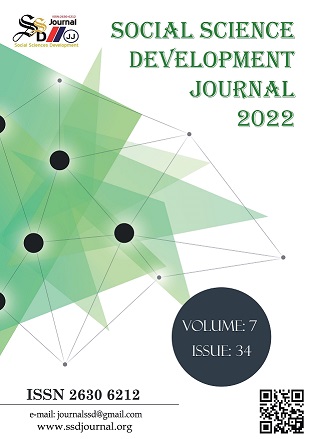ACCOUNTING OF FIXED ASSETS HELD FOR SALE UNDER TFRS 5 AND SAMPLE APPLICATIONS
DOI:
https://doi.org/10.31567/ssd.761Keywords:
TFRS 5, Fixed Assets Held for Sale, measurementAbstract
Assets that businesses acquire for use in their operations and that they do not intend to dispose of
within an operating period are expressed as fixed assets. Although fixed assets are the most
important asset group that provides cash flow to the business, businesses sometimes wish to dispose
of their fixed assets. In particular, if the business management has a detailed sales plan for the sale
of the fixed asset and the asset is likely to be sold in the market, the relevant fixed asset or asset
group is removed from the fixed asset account group and transferred to current assets in accordance
with the “TFRS 5 Non-current Assets Held for Sale and Discontinued Operations” standard. In the process of classifying non-current assets that the entity withdraws from use or production as
held for sale, their net book values are compared with their fair values less costs to sell and recorded
at the lower value. If the sale of the asset is not realized, it continues to be measured at the end of
the period with the lower of net book values and fair value less costs to sell. When the relevant
literature is examined, it is seen that the TFRS 5 Non-current Assets Held for Sale and Discontinued
Operations standard finds application in banks and financial leasing companies. In this context, in
this study, information on the classification, measurement and presentation in financial statements
of fixed assets held for sale are given




